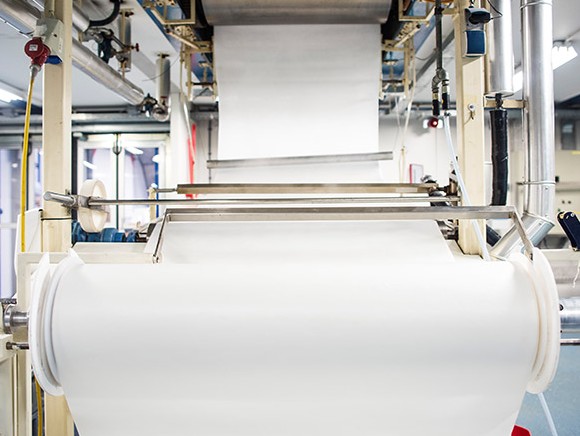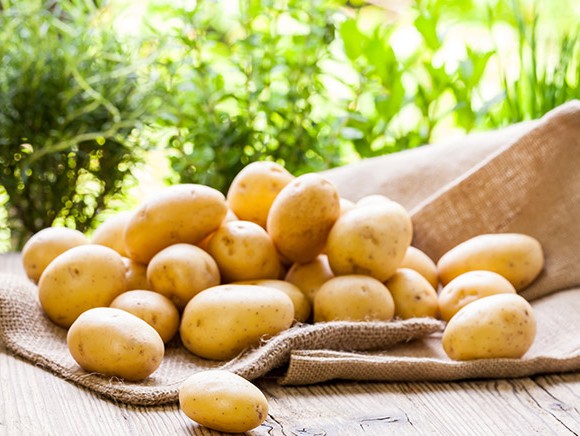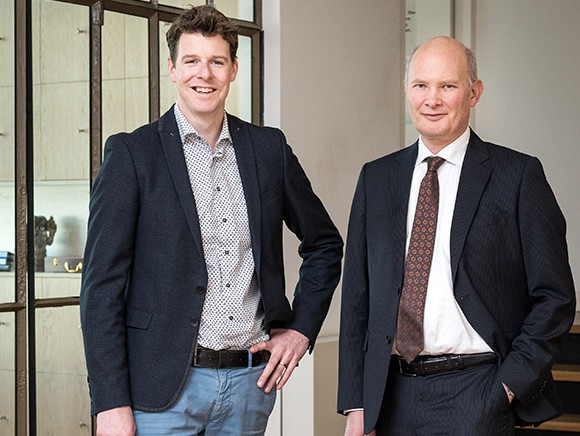
The Dutch village of Oostzaan is home to the world’s only factory that produces edible wafer paper in both sheet and roll form. The product is sold all over the world under the name of Primus Wafer Paper. Thanks to modern printing techniques using edible inks, there are countless new opportunities for ‘edible branding’.
Many people will be familiar with it – that handy piece of paper on the base of coconut macaroons or nougat, or the edible paper label or logo that used to be on loaves of bread. In the Netherlands, older people in particular know this as ouwel and in Germany it’s called Oblaten. Edible paper often evokes a sense of nostalgia as people recall buying it from sweet shops in the olden days. But technology doesn’t stand still. Innovations in printing and shaping have given the product, now known as ‘wafer paper’, a new lease of life.
The company in Oostzaan, which is one of a kind globally, makes its edible paper from potato starch based on roll drying technology. The technology was invented by the Pel brothers, who opened a factory to produce edible paper in Zaandam in 1916. For their logo, they chose the image of a windmill. The logo was revamped earlier this year, along with the website, while retaining the references to the company’s local roots.
The main raw material in wafer paper is potato starch, which the company sources from Avebe. The supplier ships several truckloads of starch powder to Primus in Oostzaan per month, enabling the company to produce over 1.5 million kilos of wafer paper annually. The blending room is where the powder is mixed with water, oil and the natural flavourings and colourings to produce a thick liquid dough. “We have a huge book full of recipes, because we custom-make everything,” says Wouter Smits, Commercial Director at Primus Wafer Paper. “We manufacture products for more than 100 customers in 40 different countries. Each country has its own rules and regulations and each customer has their own preferences.” Summing up the essence of the subsequent process, he describes it simply as: “Mixing, cooking and drying. We then move on to processing and packaging.”
The potato-starch liquid dough is pumped to the production system, where 17 huge machines containing a total of 34 rollers operate round the clock, six days a week. It’s very warm in the production hall and we can see a thick, hot, porridge-like substance slowly passing between the rotating rollers. “These rollers are 80 to 100cm wide and weigh 1,700 kilos each,” Wouter tells us. Most of them are smooth, but a few have a waffle-like pattern especially for wafer paper that is used as the base for nougat made in France, Spain or Italy. “We make different variants by adapting the formulation, the temperature of the liquid dough, the rotational speed of the rollers and the distance between them. We process six million litres of liquid dough a year.”
As we walk down the stairs to reach the lower level of the production hall, the air becomes pleasantly cooler: normal room temperature. What was still in liquid form at the top has been dried along the way and can now be seen descending as a wide sheet of wafer paper. A thin wax layer is added to it before a machine rolls it up onto large cardboard tubes. In other parts of the production facility we can see large sheets of differently coloured paper, ready to be printed and cut up, embossed or perforated as required.
"The main raw material in wafer paper is potato starch"

“The essence of the production process hasn’t changed much over the past hundred years,” comments Wouter. “That’s why it’s time for modernisation. ‘Primus goes Prime’ is guiding us in that process. From now on, we will be simplifying the organisation, further standardising the production process, innovating and improving the quality.” The first tangible result is the on-roll printing capability. “We were already good at on-roll production of wafer paper and sheet printing, but we’re now also able to print on the roll,” says Wouter with pride. “That opens up a huge number of new possibilities for new and existing markets.” The company has also embarked on an R&D programme in which it is investigating whether and how the oil can be eliminated from the product. “Oil can oxidate. If we can cut that out, we will extend the shelf life of the wafer. Besides that, we’re consciously focusing on the circular economy by re-using the waste in a rework flow.”
As we progress through the factory, we reach the room where the edible inks are made – AZO-free and based on natural ingredients such as cocoa and beetroot juice. “These inks can be used for screen printing, offset printing and digital printing – that’s the future,” believes Wouter. “Manufacturers want to provide information for consumers even if the protective layer of packaging has been removed, and the brand experience is becoming increasingly important,” he comments. “The nice thing about wafer paper is that it can be heated without any problems. In the case of bread or cookies, the logo is simply put on or under the surface of the dough; it rises along with the rest of the product and can be baked in the oven. A UK retailer uses our edible brands for its turkeys, for example. In the past, once the turkey had been taken out of the packaging and was ready to go into the oven for roasting, you couldn’t see which brand it was. People thought that was a shame – including consumers, for whom the product costs around a hundred pounds sterling; they’re keen for their guests to know that they’re being served a top-quality turkey.”
Wouter has some other interesting examples. A baker on the Dutch island of Texel uses a wafer paper logo on his bread, for instance: ‘Made using Texel flour’. “That works well; local products are gaining in popularity, plus he creates more of an experience around the bread. French delicatessens used edible brands for their pâtés. An image of a pig, turkey, cow or pheasant lets people see at a glance what kind of pâté it is. And the hip Dutch restaurant concept Balls & Glory adds an edible logo to all its hand-made meatballs to underline the uniqueness of its product. Plus we already produce confectionery items such as edible banknotes, so it’s only a small step to edible leaflets…anything is possible nowadays!”

OSV company visit
On 30 March the company opened its doors to OSV members, who saw the production process with their own eyes and were particularly impressed by the printing techniques. It was a very interesting and inspiring afternoon, not least thanks to Paul Turken’s marketing presentation about the countless possibilities of edible branding, and everyone headed home armed with a wealth of new knowledge about edible branding.

_______________________
Hajo Vlutters (Managing Director) (right) and Wouter Smits (Commercial Director).
Source: Foto aardappels: ©Jl-Pfeifer/Shutterstock.com, portretfoto: ©Fotostudio Wick Natzijl